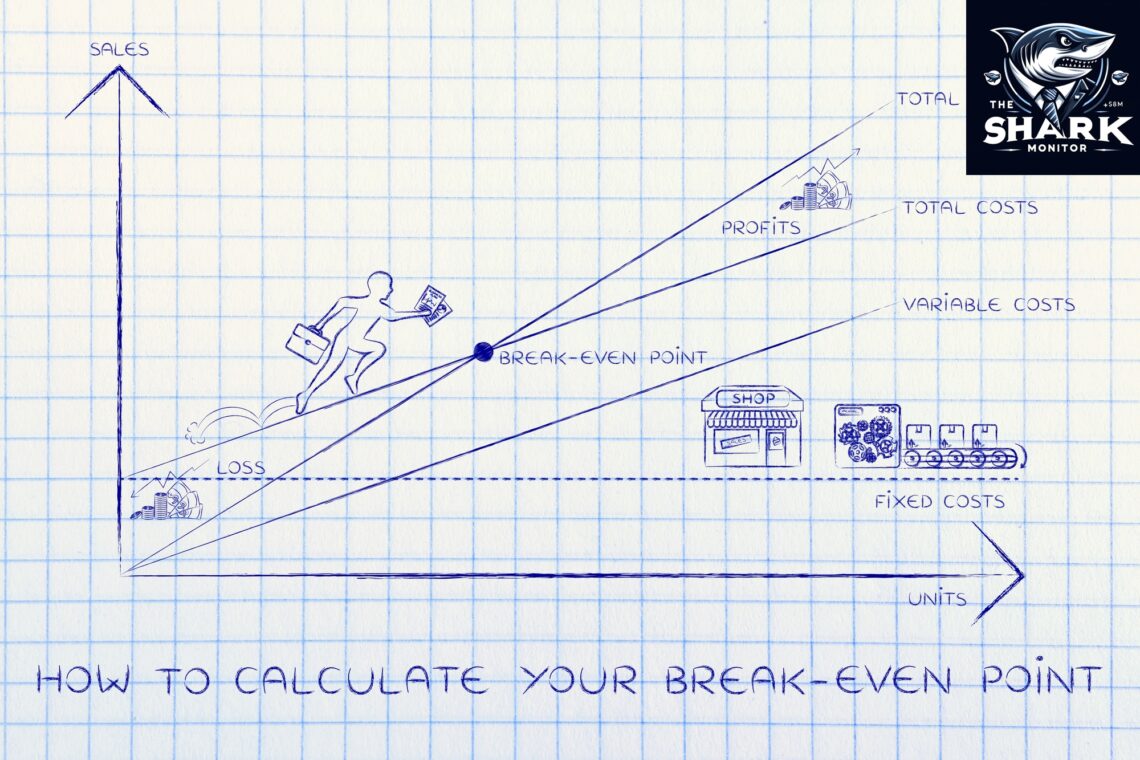
Break Even Point Analysis Calculator
Break-even analysis is an essential financial tool that provides a clear understanding of the relationship between costs, sales volume, and profitability. Thus, by using a break even point analysis calculator, businesses can make better decisions related to sales and expenses.
Table of Contents
Break-Even Point Analysis

Break-even point analysis is a financial calculation used to determine the number of units or amount of revenue required to cover the total fixed and variable costs of production or operation. It is a critical tool for businesses, investors, and financial analysts to assess the financial viability of a product, project, or investment. The break-even point (BEP) is the stage at which total revenues equal total expenses, meaning there is neither profit nor loss.
Break Even Calculator
Break Even Point: 0 units
How to use the Break Even Point Analysis Calculator
The break-even analysis involves several key components:
- Fixed Costs: These are costs that remain constant regardless of the level of production or sales volume, such as rent, salaries, and insurance.
- Variable Costs per Unit: Costs that vary directly with the level of production, such as materials and labor.
- Selling Price per Unit: The selling price of each unit of product or service.
The Math Behind the Break Even Point Analysis Calculator (for the nerds)
The formula for calculating the break-even point in units is:
[math] \text{Break-Even Point (units)} = \frac{\text{Fixed Costs}}{\text{Sales Price per Unit} – \text{Variable Cost per Unit}} [/math]
For calculating the break-even point in sales dollars, the formula is:
[math] \text{Break-Even Point (sales dollars)} = \frac{\text{Fixed Costs}}{\text{Contribution Margin}} [/math]
where the contribution margin is calculated as:
[math] \text{Contribution Margin} = \frac{\text{Sales Price per Unit} – \text{Variable Cost per Unit}}{\text{Sales Price per Unit}} [/math]
Applications and Importance
Break-even analysis is widely used across various industries for setting pricing strategies, evaluating the financial viability of new products or services, and making informed decisions about production volumes3. However, its limitations stem from the assumptions it makes:
- Cost and Revenue Linearity: It assumes that costs and revenues are linear, which may not hold over a wide range of production or sales volumes.
- Constant Prices: The analysis often assumes stable selling prices, which may not be realistic in competitive markets or in the face of fluctuating demand.
- Ignoring Market Dynamics: Break-even analysis does not inherently account for changes in market demand or competition, which can significantly impact sales volume and prices.
Adjusting for Real-World Scenarios
To make break-even analysis more reflective of real-world conditions, businesses need to account for potential fluctuations in costs, prices, and market dynamics. This involves:
- Estimating Changes in Demand and Competition: Understanding how shifts in market demand and competitive landscape could affect pricing and costs is crucial. This may require market research, scenario analysis, and staying attuned to industry trends.
- Flexible Cost Structures: Recognizing that costs may not always be strictly fixed or variable and that some costs may change with production levels or over time.
- Regular Updates: Continuously updating the break-even analysis to reflect current data and market conditions ensures that the analysis remains relevant and useful for decision-making.
Limitations
While break-even analysis is a valuable tool, it has limitations. It assumes that fixed and variable costs are constant, which may not always be the case in real-world scenarios. Additionally, it does not account for things like changes in company valuation, changes in market demand or competition, which can affect sales volume and prices.
However, even with limitations, the break even point analysis calculator is a must-have tool for entrepreneurs.


